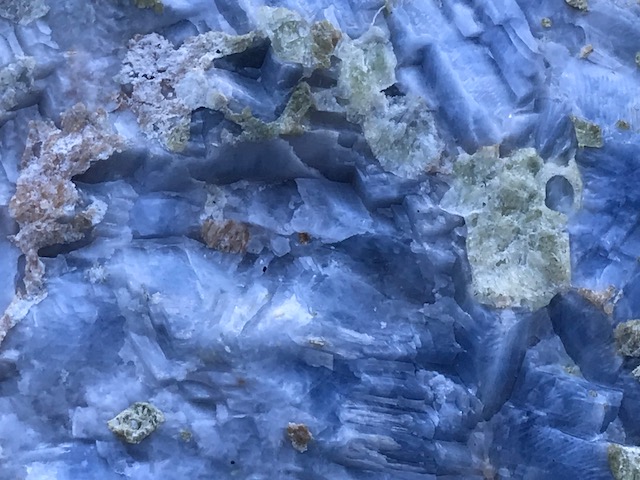Infatuated with Hummingbirds
Two years ago, when Mark Jagnow and I were building a 50-foot-long trellis across the south side of my house to grow trumpet honeysuckle, he asked, “Are you infatuated with hummingbirds?” My answer was an emphatic yes!
And I am not alone.
Europeans especially came under their spell because there was nothing like them in the Old World, and if they stayed home they only knew hummers from museum displays, and from the stories about a tiny creature – whose wings were only a blur in flight, whose flight could be a blur, and who could fly backwards, straight up, straight down, even upside down for a few moments, or could simply hover in place.
John Ruskin, the well-known European art critic, was a serious mineral collector because crystals had incredible colors; he felt they represented nature’s art at its best and they captured his beliefs about the rational and immutable laws of creation – where everything is predetermined. But then he visited an exquisite display of stuffed hummingbirds in dioramas at the London Zoological Gardens in 1851 and was smitten. He hurried to learn about their great variety (today some 300 plus species are known), their flickering colors, which shift with the slightest change in angle, and unlike a pretty crystal – which can sit in a box for a century – the entire creature is ephemeral, can hybridize, is here today and gone tomorrow, is driven by its own program, and nothing is predetermined.
Ruskin’s regret was “I have wasted my life with minerology, which has led to nothing. Had I devoted myself to birds, their life and plumage, I might have produced something myself worth doing.” (The Species Seekers, p. 165)
I have been more fortunate than Mr. Ruskin. In the summer of 1965, while majoring in geology at UCLA, I was employed as a mineral collector and fossil hunter for the Los Angeles County Museum, which gave me access to collect some really rare minerals, like the palladium crystals in the isolated Nora Blanchard mine in New Mexico, and the strange minerals in the translucent blue marble at Crestmore, California. But Barb and I also managed a group of apartment houses on fraternity row, where I modified the landscaping to attract hummingbirds. Of the 14 species known to migrate north from Mexico, we had approximately half those visiting us often. The field guides were not very complete back then and some females and juveniles were impossible to identify (Allen’s and the Rufous are still impossible to separate).
Today, I still have a little mineral display at home made of pretty crystals, which grandkids and schoolchildren enjoy in the winter. But in the summer, the trumpet honeysuckle trellis is the better attraction, and kids have been known to sit perfectly still on the lawn for 15 or 20 minutes, waiting for an emerald blur to appear. Check out this hummingbird video for a display of color and acrobatics:
As new species of hummingbirds were discovered, many other people also saw the analogy to gems and minerals, and this appears in the names they have been given, including:
Amethyst-throated Sunangel
Andean Emerald
Berylline Hummingbird
Blue-chinned Sapphire
Blue-tailed Emerald
Brace’s Emerald
Brazilian Ruby
Canivet’s Emerald
Caribbean Emerald
Chiribiquete Emerald
Coppery Emerald
Coppery-headed Emerald
Cozumel Emerald
Crimson Topaz
Cuban Emerald
Emerald-bellied Puffleg
Emerald-chinned hummingbird
Fiery Topaz
Garden Emerald
Glittering-bellied Emerald
Glittering-throated Emerald
Golden-crowned Emerald
Golden-tailed Sapphire
Great Sapphirewing
Green-tailed Emerald
Green-throated Mountain-gem
Hispaniolan Emerald
Honduran Emerald
Horned Sungem
Humboldt’s Sapphire
Narrow-tailed Emerald
Plain-bellied Emerald
Puerto Rican Emerald
Purple-throated Mountain-gem
Red-billed Emerald
Ruby-throated Hummingbird
Rufous-throated Sapphire
Sapphire-bellied Hummingbird
Sapphire-spangled Emerald
Sapphire-throated Hummingbird
Sapphire-vented Puffleg
Short-tailed Emerald
Tourmaline Sunangel
Turquoise-throated Puffleg
Versicolored Emerald
Western Emerald
White-bellied Emerald
White-bellied Mountain-gem
White-chested Emerald
White-chinned Sapphire
White-tailed Emerald
White-tailed Goldenthroat
White-throated Mountain-gem
I’ve written a couple of blogs about attracting hummingbirds and here are a few: Attract Hummingbirds with Native Honeysuckle, Native Honeysuckle Trellis Also Caters to Orioles

The translucent blue marble from Crestmore Quarry, the yellow-white splotches are idocrase


